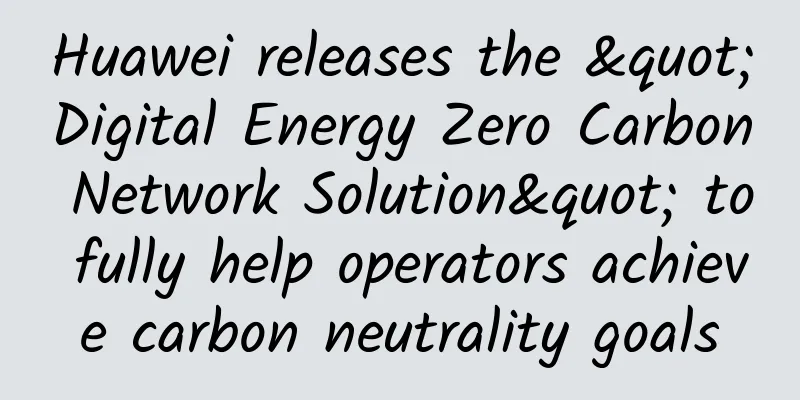Four factors driving 100Gbps network upgrades

|
According to Crehan Research, 100Gbps and 25Gbps Ethernet speeds grew 40% year-over-year and accounted for 24% of total high-speed network card revenue in 2020. Here are the reasons that drive enterprises to upgrade their connections to 100Gbps. The first answer is that IT infrastructure is moving towards faster, smaller, and more cost-effective. But in addition to this, there are four specific factors that are driving enterprises to move towards higher data rates. 1. Compute-intensive workloads are growingHigh-performance computing and interactive applications that are sensitive to throughput, latency, and jitter (such as telemedicine and high-frequency trading) always require the highest possible speed and therefore benefit greatly from 100Gbps. Organizations that provide these applications as a service are early adopters, and as these workloads become more common, the demand for 100Gbps is growing. 2. Increasing network loadOver the past few years, the widespread adoption of mobile devices and various online services has increased the number and duration of connections, as well as the amount of data transmitted through them. The outbreak of COVID-19 has increased the use of e-commerce and online services, and an unprecedented number of knowledge workers have turned to remote work. Many companies have announced that they will move to permanent remote work for some or all employees. All of this means more network traffic. This sudden and perhaps permanent shift has two effects that are driving the adoption of 100Gbps. The first is simply the volume of traffic -- which has increased significantly faster than expected as more companies and employees rely on digital workloads. Another implication is that much of this traffic, like video, is very sensitive to latency and jitter. Moving traffic faster increases overall throughput, eliminating bottlenecks. 3. AI TransformationThe application of artificial intelligence technology has reached a certain level, it is being integrated into every major type of enterprise operation technology, including marketing, human resources, sales, e-commerce, manufacturing, customer retention, IT operations, etc. This growing adoption has an impact on the network in two main aspects, namely throughput and latency. First, AI and its underlying ML models increase east-west traffic because training machine learning models is very data and I/O intensive (i.e., model training requires a lot of bandwidth). The faster models are trained, the faster they can be put into production to provide the expected benefits. Second, AI solutions often have to deliver results in real time and are built on high-performance architectures that provide millisecond responses to customer interactions. All of this requires data to be transferred as fast as possible, with the current commercial standard being 100Gbps. 4. Maturity and cost reductionAs the demands of the other three factors have increased, network infrastructure technology (and the corresponding security and network monitoring tools) has steadily matured, and the cost of the underlying components has fallen. There is now a robust supply of hardware to meet the demand for higher speeds. Managing the upgrade processUpgrading your data center to 100Gbps involves more than just replacing infrastructure. Here are the key things to consider when planning your upgrade to 100Gbps. Can our tools keep up?As enterprises upgrade their core networks to 100Gbps, they must also update their network security and performance management tools in tandem. The best practice is to upgrade these components early in the move to 100Gbps so that security protections can be maintained and IT can monitor the network and troubleshoot any issues. At a minimum, the monitoring fabric must be upgraded before or along with the core network and provide a bridge to tools with lower ingestion data rates. Doing so will allow them to compare key pre- and post-upgrade parameters. At higher data rates, security solutions like network detection and response are even more critical. How to build a bridge between high-speed and low-speed network parts?Complex enterprise networks are difficult to upgrade all at once. Part of the upgrade may require the use of a network packet broker (NPB) to bridge the gap between old and new parts of the network that operate at different data rates. NPBs can also be used to match the ingestion limits of security and monitoring tools to extend their lifespan. How do we maintain network visibility at upgraded speeds?Lossless monitoring and real-time observation of metrics, processing, and routing is a technical challenge for packets that traverse the monitoring fabric every 6.7 nanoseconds. Enterprises must carefully evaluate future monitoring solutions to ensure they can reliably ingest packets and observe key performance indicators for the solution that correspond to the service and use case. For example, if the application cannot tolerate latency greater than 5 milliseconds, then the monitoring solution must observe latency with at least millisecond resolution. all in allStandardization of 100Gbps data rates has already begun and will be implemented over the next few years. Every enterprise is using this data rate, or is planning to use it. As with all generational changes and upgrades, careful planning, ensuring monitoring structures are an integral part of the plan, and monitoring is in place as early as possible will ensure a smooth and safe transition to the new data rate. |
<<: 618 is here, it’s time to upgrade your WiFi 6 router!
>>: Vietnam's three major operators reach 5G RAN equipment sharing agreement
Recommend
South Korean court rules that network operators can charge broadband fees to big data users like Netflix
As the video streaming market explodes, a South K...
Compare Alipay and WeChat Pay in many aspects, which one do you prefer?
In the past two years, Alipay and WeChat payment ...
spinservers Spring Festival discount: $149/month 10Gbps San Jose server - 2*E5-2630Lv3 CPU, 256G memory, 2*1.6T SSD hard disk
spinservers is a site under Majestic Hosting Solu...
What process resources are shared between threads?
[[357394]] Processes and threads are two topics t...
Academician Wu Hequan: 5.5G does not require full network coverage, and recommends joint construction and sharing
IT Home reported on December 7 that the 2023 Worl...
Feiyuxing Wireless helps Wuhan Tilisaer complete panoramic coverage of office buildings
When it comes to staying beautiful, this is proba...
RackNerd Double 11 Promotion, Los Angeles VPS Annual Payment Starting from $12
RackNerd also launched a promotion for China'...
What comes after 5G communications?
This topic seems a bit paradoxical. First of all,...
Hypere: £12/quarter KVM-AMD Ryzen9/2GB/70G NVMe/10Gbps unlimited traffic/UK data center
Hypere should be a relatively new foreign hosting...
The potential of smart education continues to be released, and 5G brings three major boosts
Education is the foundation of a century-long pla...
PAM4 and Coherent Technology in 100G DWDM Optical Modules
[[385177]] 100G transmission in data centers is p...
10 ways to improve Wi-Fi signal when surfing the Internet
[[265727]] Slower browsing speeds, no streaming, ...
Network security knowledge: View the user license agreement
It is very necessary to understand the user licen...
Single-pair Ethernet standard means goodbye to batteries
If you’ve ever spent a Christmas morning with chi...
Byte side: TCP three-way handshake, very detailed questions!
Hello everyone, I am Xiaolin. A reader was asked ...









